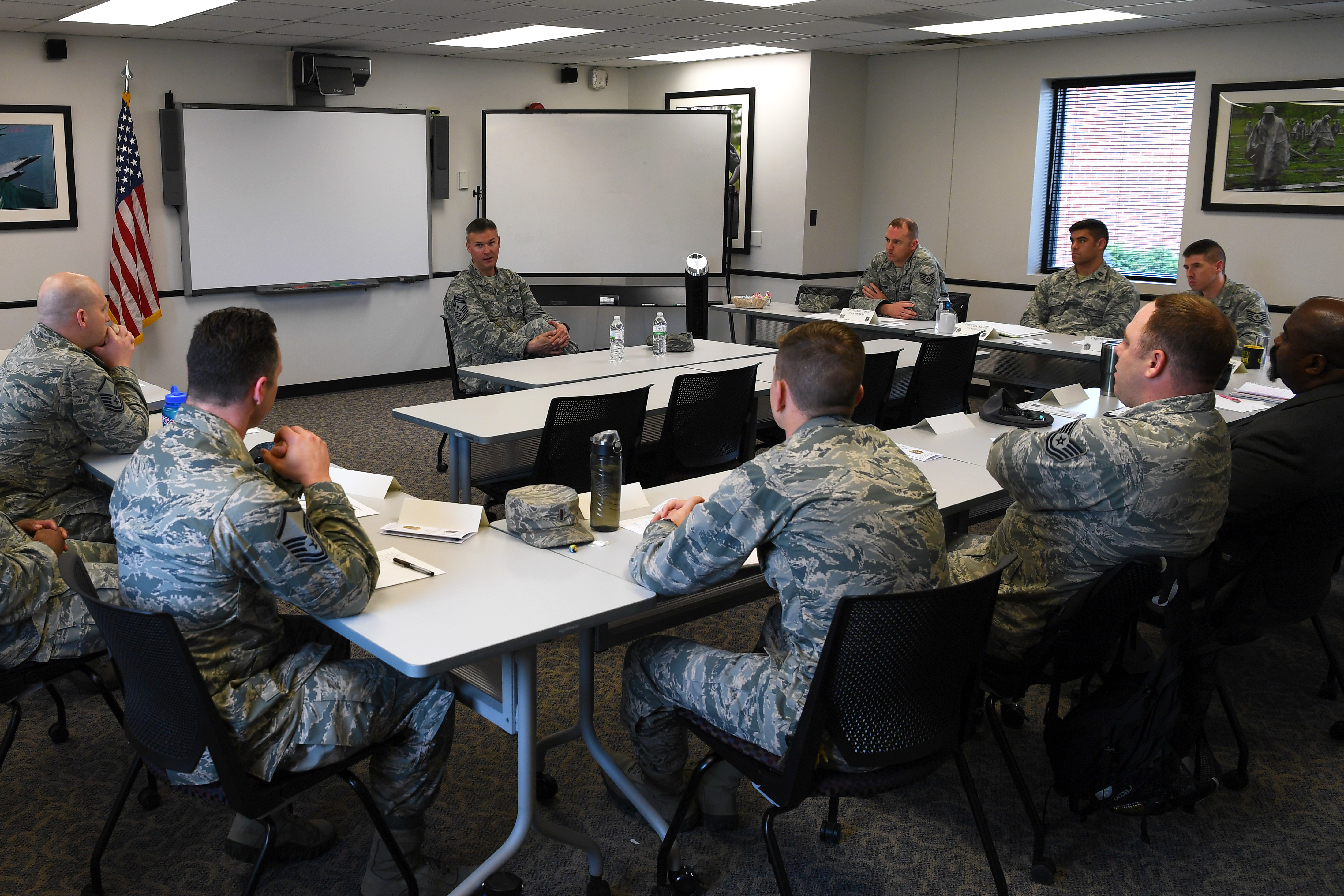CMSSgt. Brian Thomas, 319th Air Base Wing command chief, center, speaks to enlisted service members, officers and civilian employees in current or future leadership positions during a course focused on leadership May 8, 2018, on Grand Forks AFB, N.D. USAF photo by A1C Elora J. Martinez.
The Air Force is taking a more deliberate approach toward developing its future leaders, with special attention being paid toward finding and grooming high-quality squadron commanders. In the future, the service will pay closer attention to those deemed to have squadron commander potential, Air Force Chief of Staff Gen. David Goldfein said last week. Goldfein has previously called squadrons the “heart and soul” of the service, and has made their revitalization one of his key focus areas.
“What’s different now is we’re focusing very precisely on the development of that officer that we believe has the potential to become a squadron commander,” Goldfein told Air Force Magazine in an interview. “That actually starts at flight [lead] training, when really you got a first taste of leadership at the tactical level,” he said.
The Air Force will therefore be on the lookout for good lieutenant colonel-level leadership candidates while the airmen are still very young. “That’s why I’ve asked wing commanders to reestablish, if they don’t have them, their Flight Leader Courses at the wing level,” he said. “From that course, and from watching these young officers, I’m asking wing commanders to identify those that they believe have the most potential to eventually become a squadron commander,” Goldfein said.
Those with leadership potential will be somewhat selectively steered through a series of Air Force developmental experiences, inculcating them with what it takes “to be able to succeed as a commander,” Goldfein said. The idea is for leaders and mentors to have had repeated opportunities to teach and train the leadership candidates prior to their “taking the flag.”
Assuming the mantle of leadership will not be foreign under this model. Future squadron commanders should have had “experiences along the way,” he said, and USAF will manage leadership development “as part of the talent pool in our Air Force.”
This is “more of a structured environment than we’ve had in the past,” Goldfein said, and represents a more proactive approach.
The leadership-development work is “based on the recognition that if we can get the squadron command piece” of the Air Force right, it will go a long way toward addressing “the challenges we have.” Ideally, the squadron commanders will be better prepared, and the squadrons, airmen, and the Air Force will all benefit.
